Vango F10 Neon UL1 review: an ultralight tent for fast forays on the wild side
Vango's solo tent is the ideal solo shelter for quick overnight hiking escapades, fastpacking and bikepacking

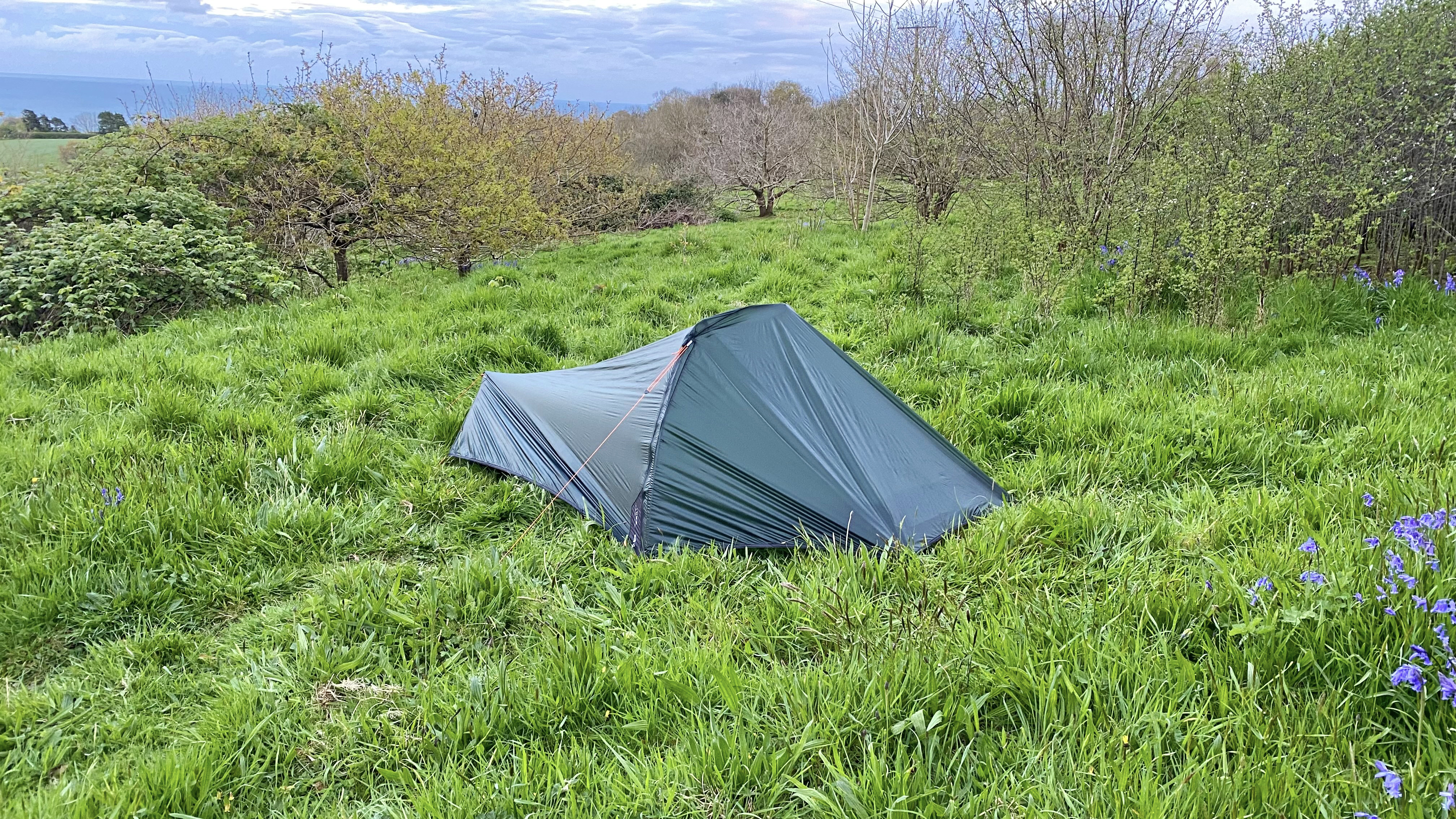
The F10 Neon UL1 by Vango, akin to a 2L water bottle but lighter, is an advanced one-person shelter for gram-counters and adventurers. Perfect for fastpacking or bikepacking, this weatherproof tent offers more features than a bivvy bag without extra weight. Ideal for solo explorers who travel light.
-
+
Ridiculously light
-
+
Tiny pack size
-
+
Quick to pitch (once you know how)
-
+
Fly and inner pitch together
-
+
Interior pockets
-
+
Discreet colour
-
-
Tiny, thin titanium pegs don’t hold well & are easy to lose
-
-
Very little internal storage space
Why you can trust T3

It’s not entirely fair to compare Vango's sophisticated F10 Neon UL1 solo shelter to the best backpacking tents on the market because it is very much designed with a specific purpose in mind: to provide weatherproof overnight protection for one person engaged in an outdoor adventure that involves carrying the least amount of weight possible.
It goes beyond anything a bivvy bag can offer, but this is not the best tent for headroom for people who want to sit around playing cards or a vestibule for providing cover for cooking in the rain. All that matters is that it’s compact and easy to carry while you’re out on the trail—whether you are speed hiking along a multiday route or engaged in a fastpacking or bikepacking escapade.
Roughly the same size as a 2L bottle of water and considerably lighter and easier to carry, the F10 Neon UL1 from Scottish outdoor specialists Vango is an advanced one-person shelter that will get gram-counters grinning and delight anyone who enjoys a good fastpacking mission or bikepacking escapade.
This wonderfully weatherproof tiny tent is aimed at explorers who like to fly solo and travel extremely light but tend to venture very much on the wild side. With a twin-skin design (fly sheet plus mesh inner), it offers much more cover, a higher degree of functionality, and many more features than a basic bivvy bag, but at no extra weight penalty. And it will even make your wallet lighter…
Vango F10 Neon UL1 review
Price and availability
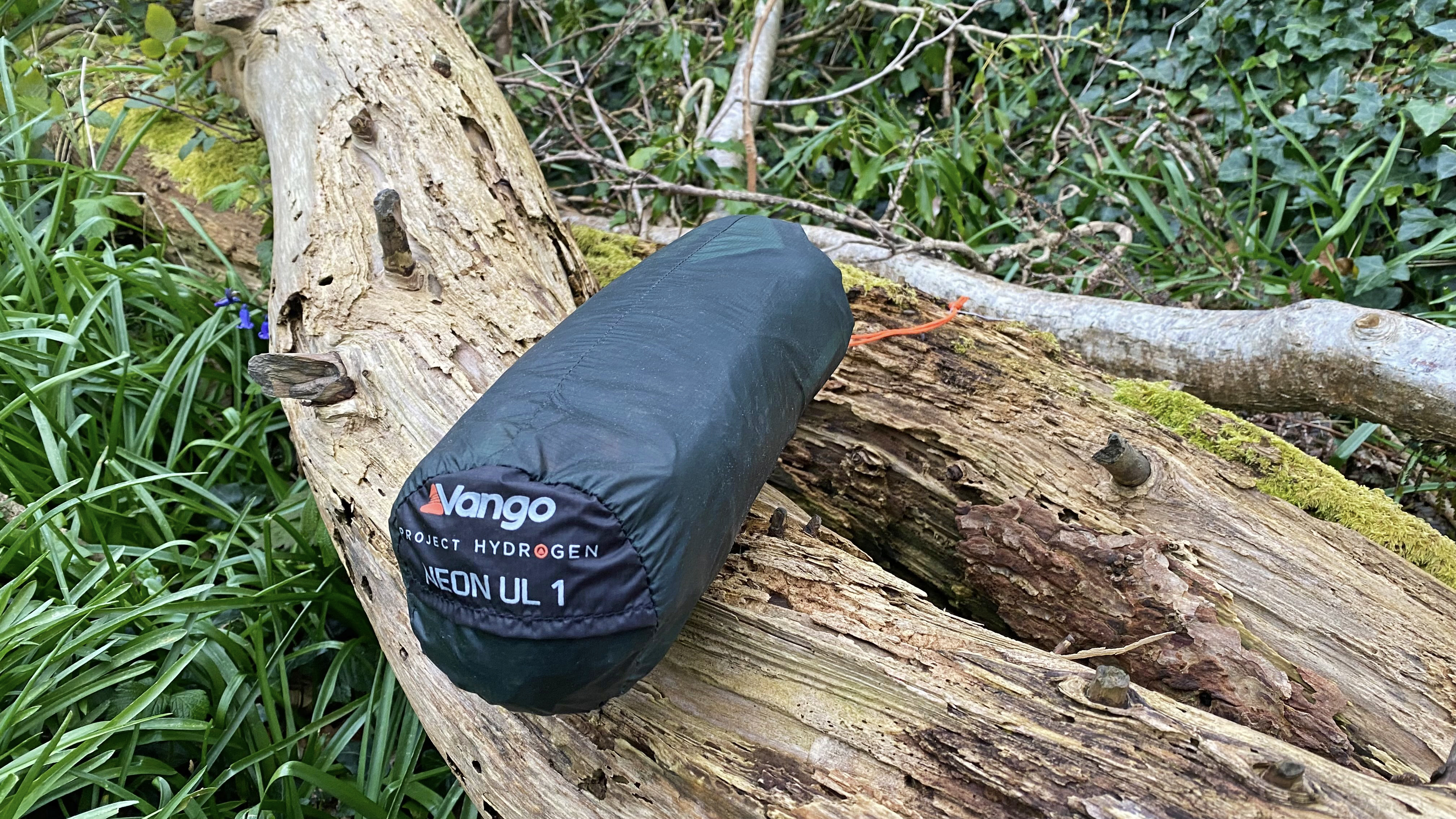
The F10 Neon UL1 is available to purchase directly from Vango and other outlets now for a list price of £455.
Specifications
- Style: One-person, single-poled shelter
- Pack size (L x H x W): 27 x 8 x 22cm
- Pitched dimensions (L x W x H): 230 x 120 x 70cm
- Weight: 509g
- Seasons: 3
- Capacity: 1 person
- Vestibules: 0
- Flysheet hydrostatic Head rating: 2000mm
- Fly fabric: Protex 7D Double Silicone
- Groundsheet: 10D Ripstop Nylon PU
- Poles: 1 x PowerLite Plus 7001 T6 Alloy Pole
- Pegs: Titanium
- Pitch time: 5 minutes (when you know how)
- Colour: Green
Design and ease of pitching
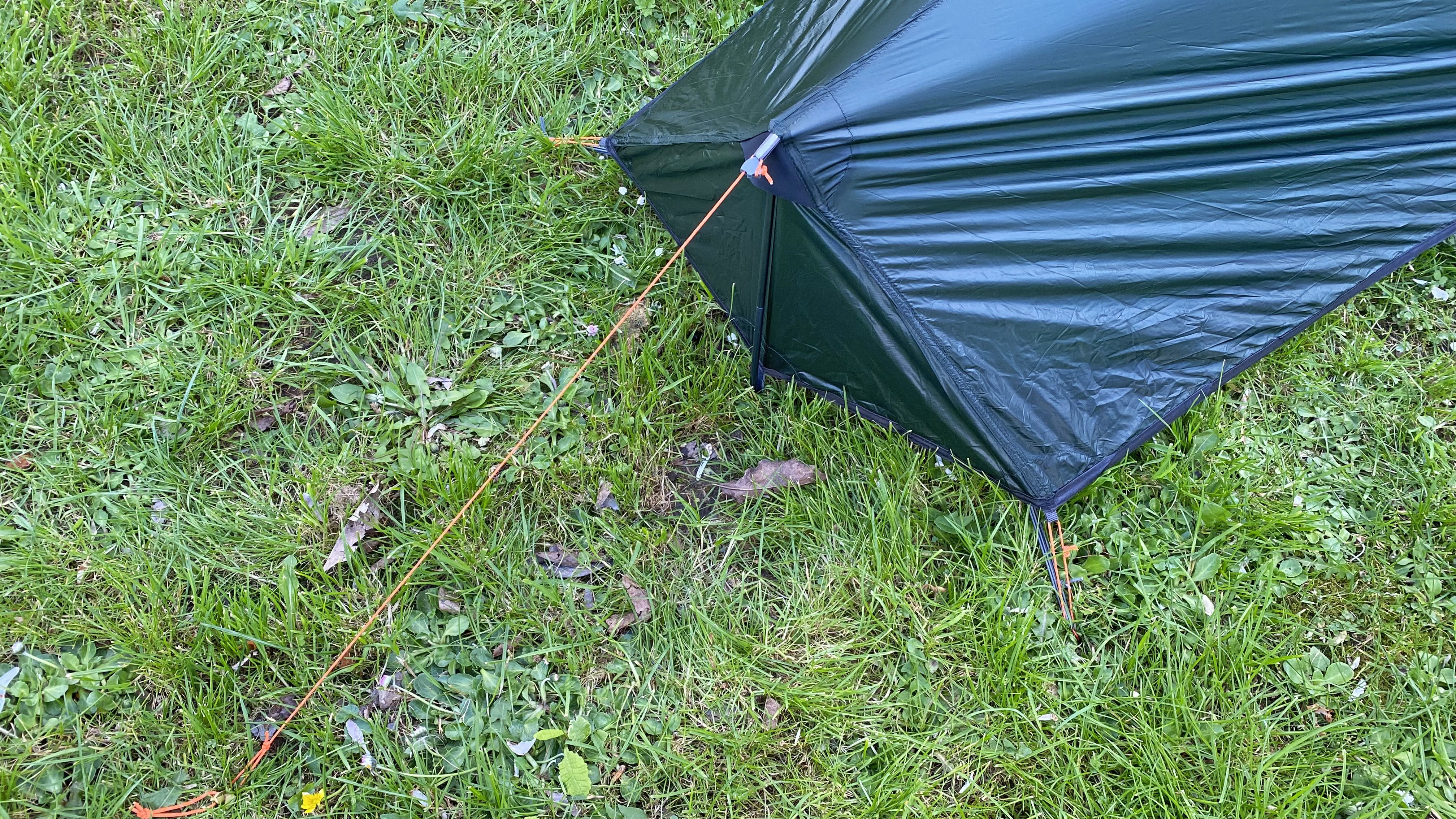
The F10 Neon UL1 one-person shelter has a twin skin design, which is to say it has a wind- and waterproof flysheet to keep the elements out and an inner tent that supplies the sleeping space.
The tent is made from Protex 7D Double Silicone, an incredibly lightweight material. The flysheet has a hydrostatic head of 2,000mm, which—while far from the highest rating I’ve encountered—is still impressive for such a featherlight shelter.
Get all the latest news, reviews, deals and buying guides on gorgeous tech, home and active products from the T3 experts
The tent can be pitched fly first, or you can erect the whole lot together (once you’ve got the hang of it). The pitching instructions are relatively easy to follow: you basically peg the flysheet out, prop up the foot end with the integrated upright (pictured above), put the pole together and slot each end in an eyelet to create a hoop at the head end, and then attach both the flysheet and the inner to the pole (using Velcro tabs for the former, and plastic hoops and toggles for the latter - as seen below) before tensioning the entire thing out.
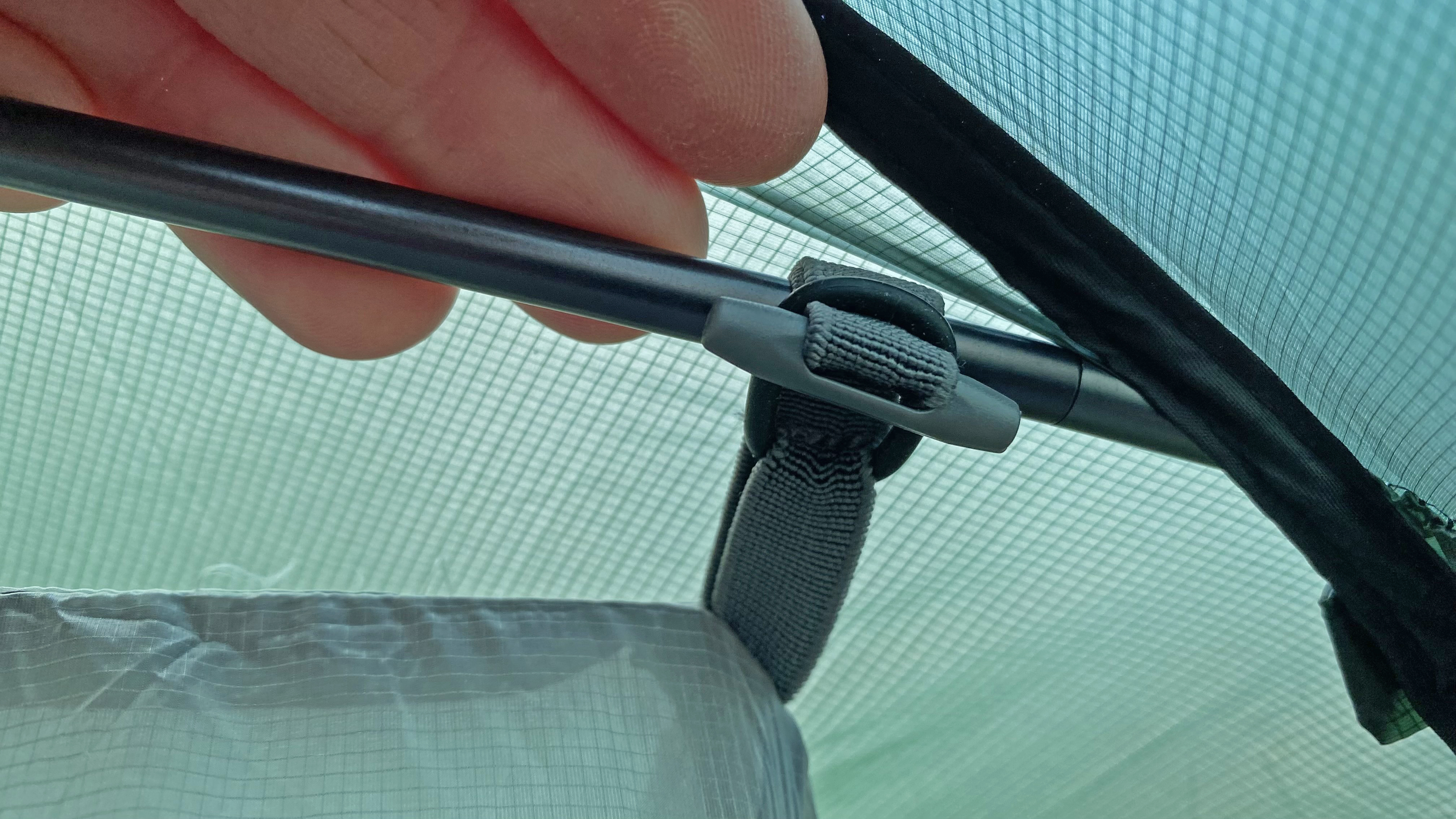
After a couple of uses, and when done in calm conditions and good light, you can easily have the F10 Neon UL1 up and be in your sleeping bag in 5 minutes flat. The first time you pitch it, however, expect the process to take a bit longer, and if there’s a strong wind gusting the superlight material will blow around all over the place, leading to swearing and tantrums, but more of that later.
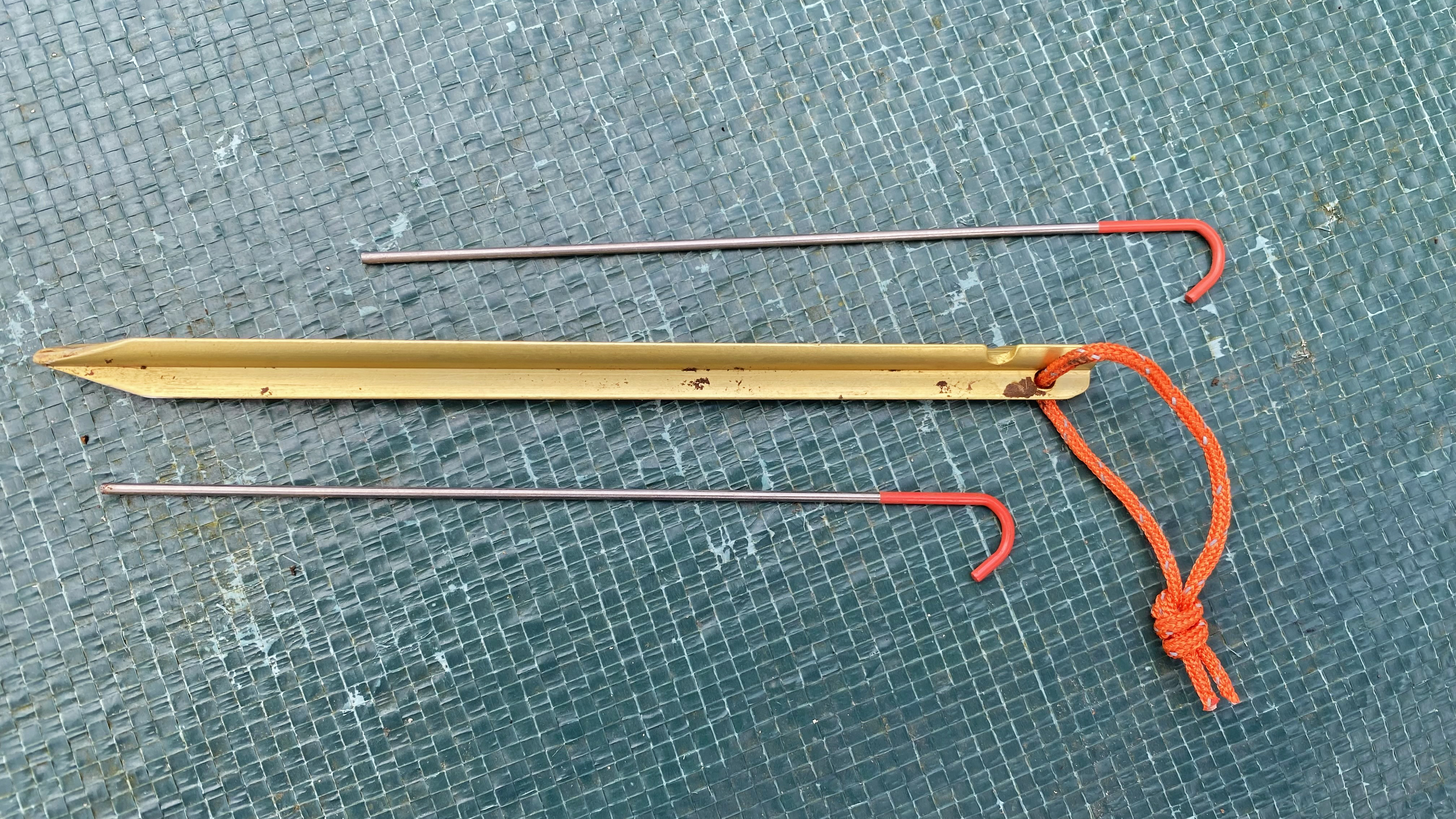
The ‘pegs’ are the most surprising part of this tent. While three standard-style star-topped pegs are supplied, the other eight pegs in the kit resemble bits of thin wire with a hook on top (pictured above).
Made from titanium, they are tougher than they look (although they still bend), but they’re so thin and short that I’m not at all convinced they’re capable of providing the kind of secure hold sometimes required when camping in the wind-whipped wilds.
Obviously, this is a weight-saving effort (when I popped one of the titanium spikes on my scales, it didn’t even register, so they’re less than a gram each, as compared to the 8g weight of the individual standard pegs).
Performance
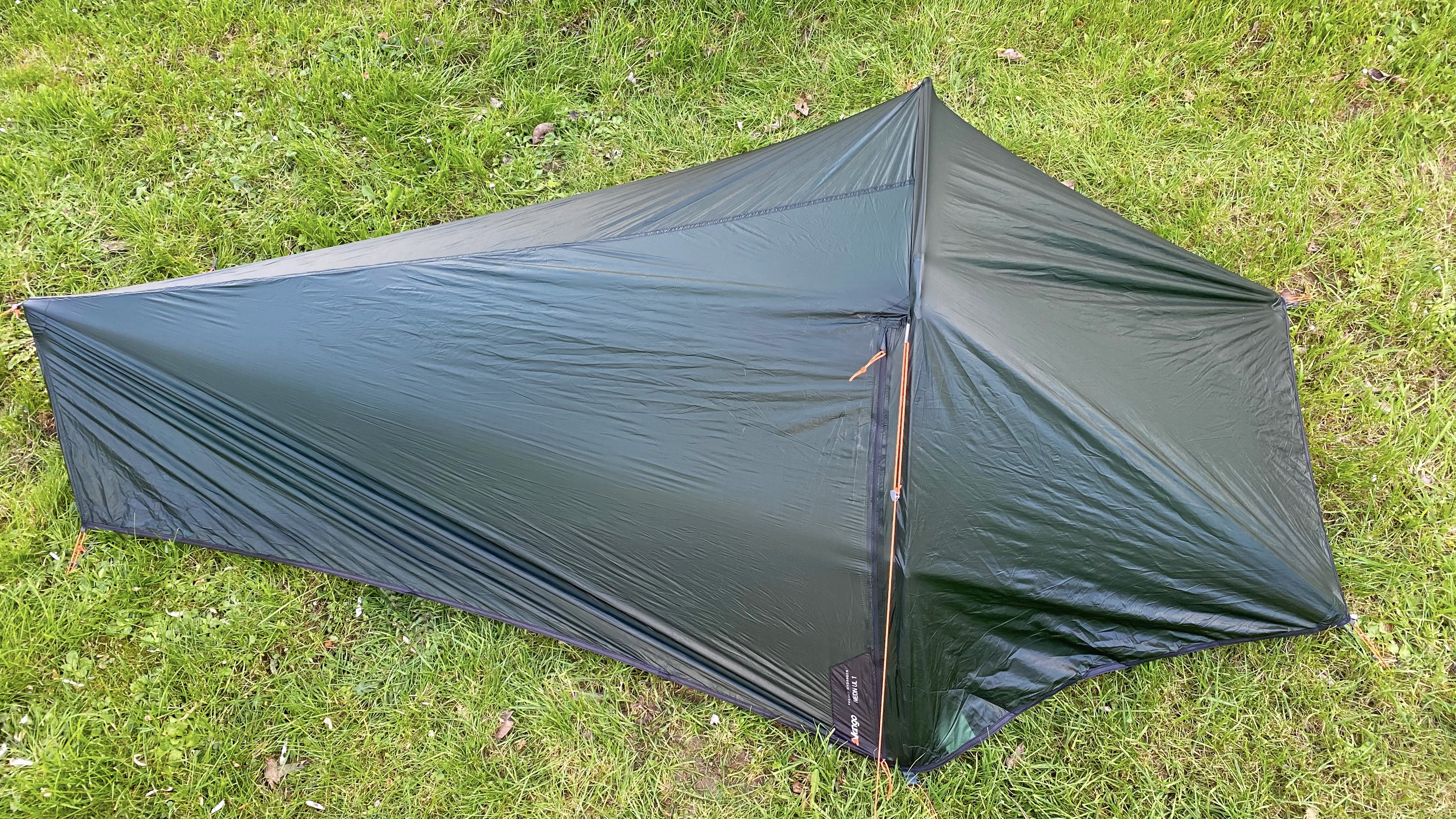
The very first time I took this tent out was at the tail end of Storm Kathleen, and I can report that trying to pitch a super lightweight shelter like the F10 Neon UL1 in high winds is less than ideal. The Protex 7D Double Silicone material flaps around like parachute silk in the wind, and with it being our first date, I was not au fait with what needed to go where in what order.
Usually this isn’t a problem – I’ve been doing this a while, and usually it’s pretty obvious how to put a tent up. Eventually, I had to resort to reading the instructions (to be fair, these are comprehensive and easy to locate, being attached to the stash bag) and then finding some stones to keep the flysheet roughly where I wanted it while I got my head around the pegs.
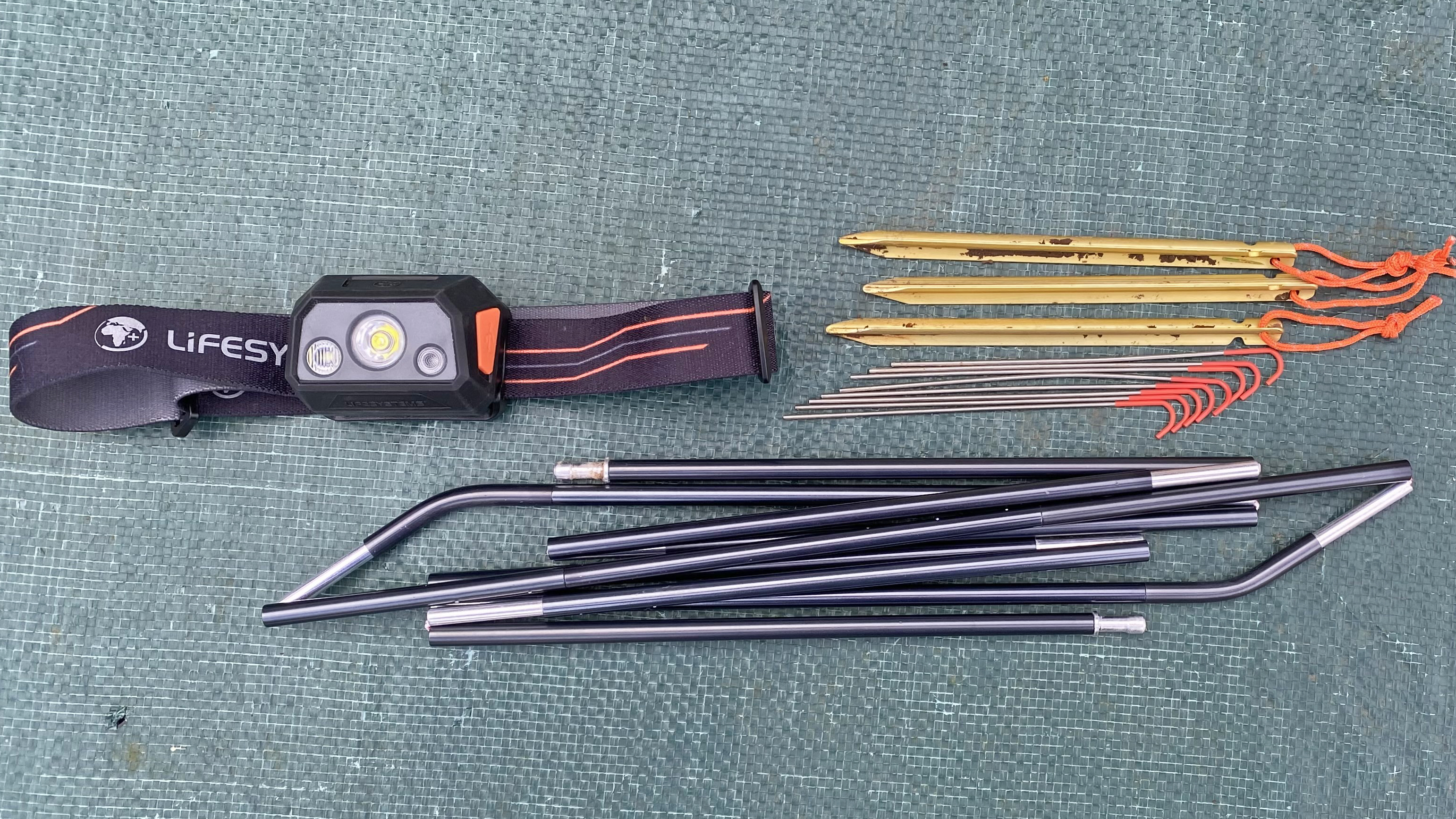
Because that’s the next surprise. The pegs do not look like tent pegs. Aside from three normal-looking pegs, the eight ‘pegs’ that come with the Vango F10 Neon UL1 are essentially short bits of thin titanium wire with a hook on top. As the wind buffeted me from all directions, I looked askance at these ‘anchors’, wondering how I was going to catch the tent when it inevitably took off after the first gust of wind.
I persevered, however, and miraculously, by the time I had the F10 Neon UL1 up, the wind had completely dropped, and it soon became apparent that Kathleen had moved on to mess someone else’s hair up. In a way, I was disappointed because I really wanted to test how long those pegs would have stayed in the ground in storm conditions (from the ease with which they went into the soft ground, I think they would have been pinging out pretty quickly), but as it was, I had to endure a largely stress-free night.
One other point about these pegs: despite being coloured red on top, they are still very easy to lose in long grass (or, I'm sure, in various other terrain types). I think they're a neat idea for the times when you really do want to go super light (while bikepacking or fastpacking), but considering the price of this tent, it wouldn't hurt Vango to throw in a few more standard pegs.
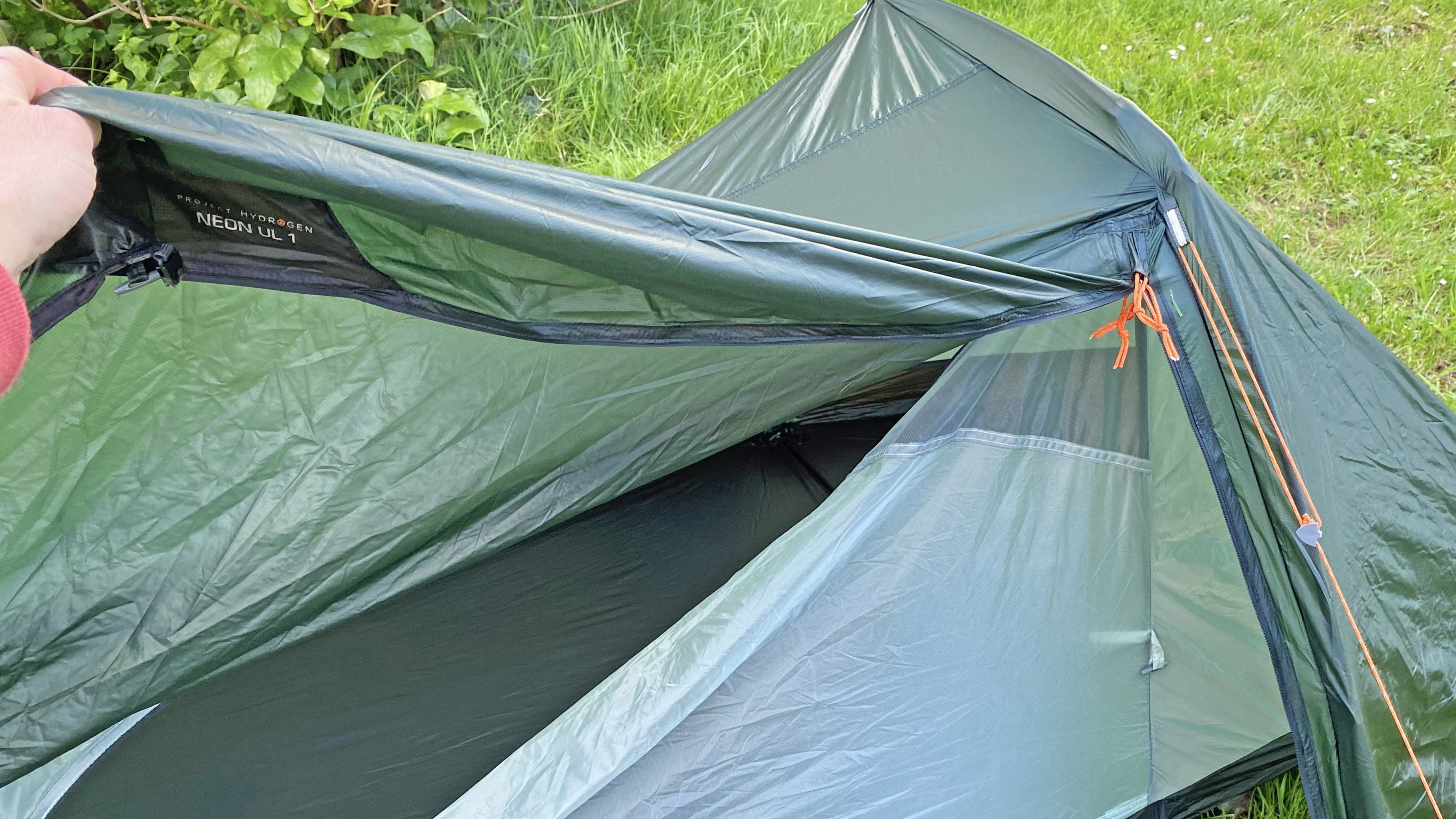
Pegs and pitching dramas aside, I’m pretty impressed with the design of the F10 Neon UL1. Having now used the tent several times in different places and conditions, I can confirm that in non-stormy weather, it is easy enough to erect. The main pole is well designed and nicely shaped to give the shelter strength and stability, and the upright at the bottom is essentially a mini pole, included to give your feet some wriggle room and preserve some space between the fly and the inner to avoid moisture seeping through.
Considering the shelter isn’t much bigger than a coffin, there’s actually a reasonable amount of headroom at the top. Not enough to actually sit up, of course, but certainly to rest on your elbows, read or get dressed without pushing the inner against the outer and compromising the waterproofing.
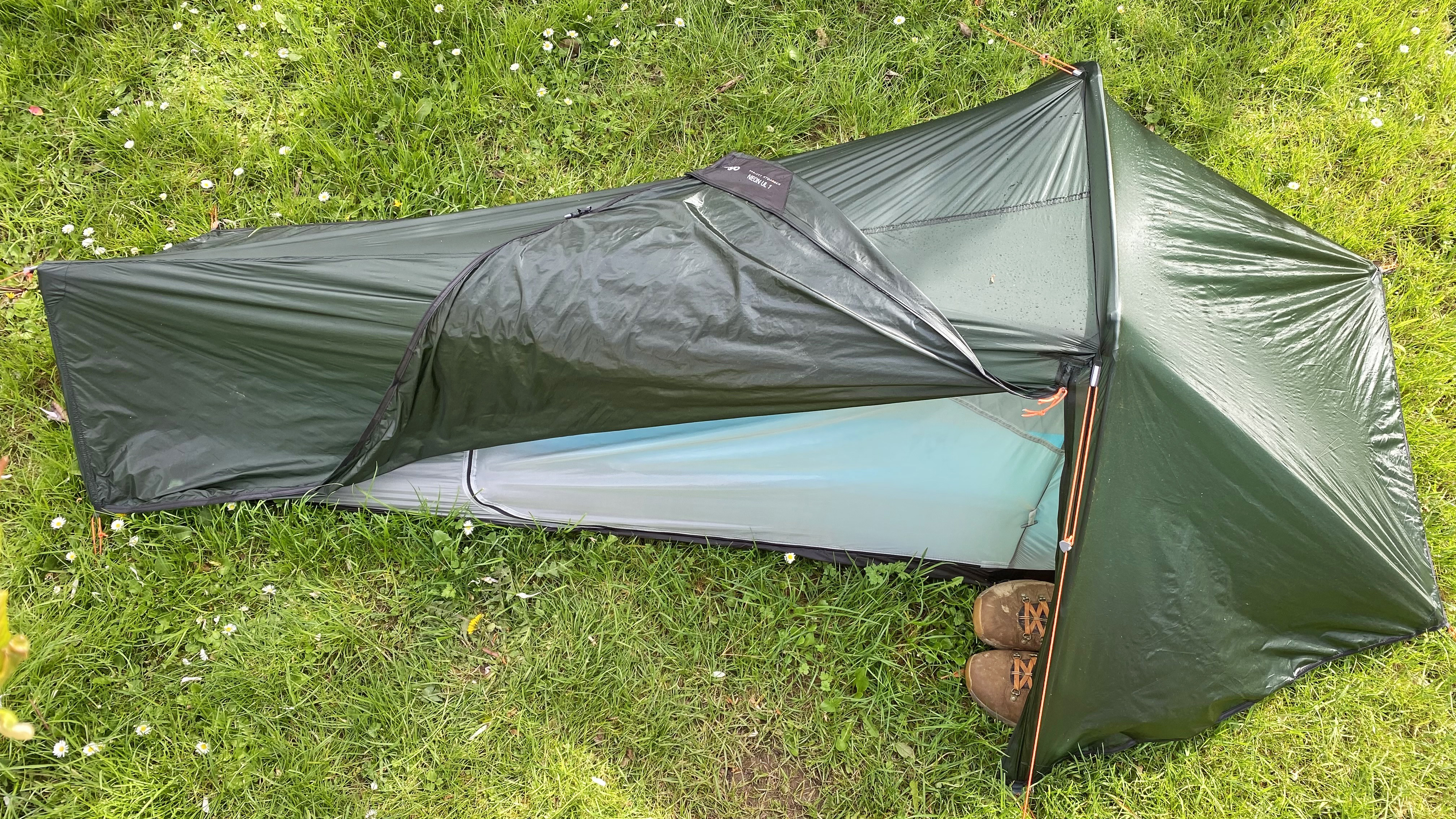
While there is no vestibule (no surprise, given the lightweight design and minimalist approach of this shelter), there is just about enough room to stash your walking boots or hiking shoes in the dry by the side of the tent.
Depending on how big your hiking backpack is—and how much space you take up—you might have to use it as a pillow, but most people will have enough room around them to stash a few things inside the main compartment.
There is a good-sized pocket on the inside for keeping essentials like a headtorch and your phone somewhere close to hand, and a very small loop on the inside where you can hang a handheld torch.
It’s never that easy getting in and out of a tent that sits so low to the ground, but the inner tent door is extra long, and there are double zips on both the flysheet and the inner entrances, all of which really help.
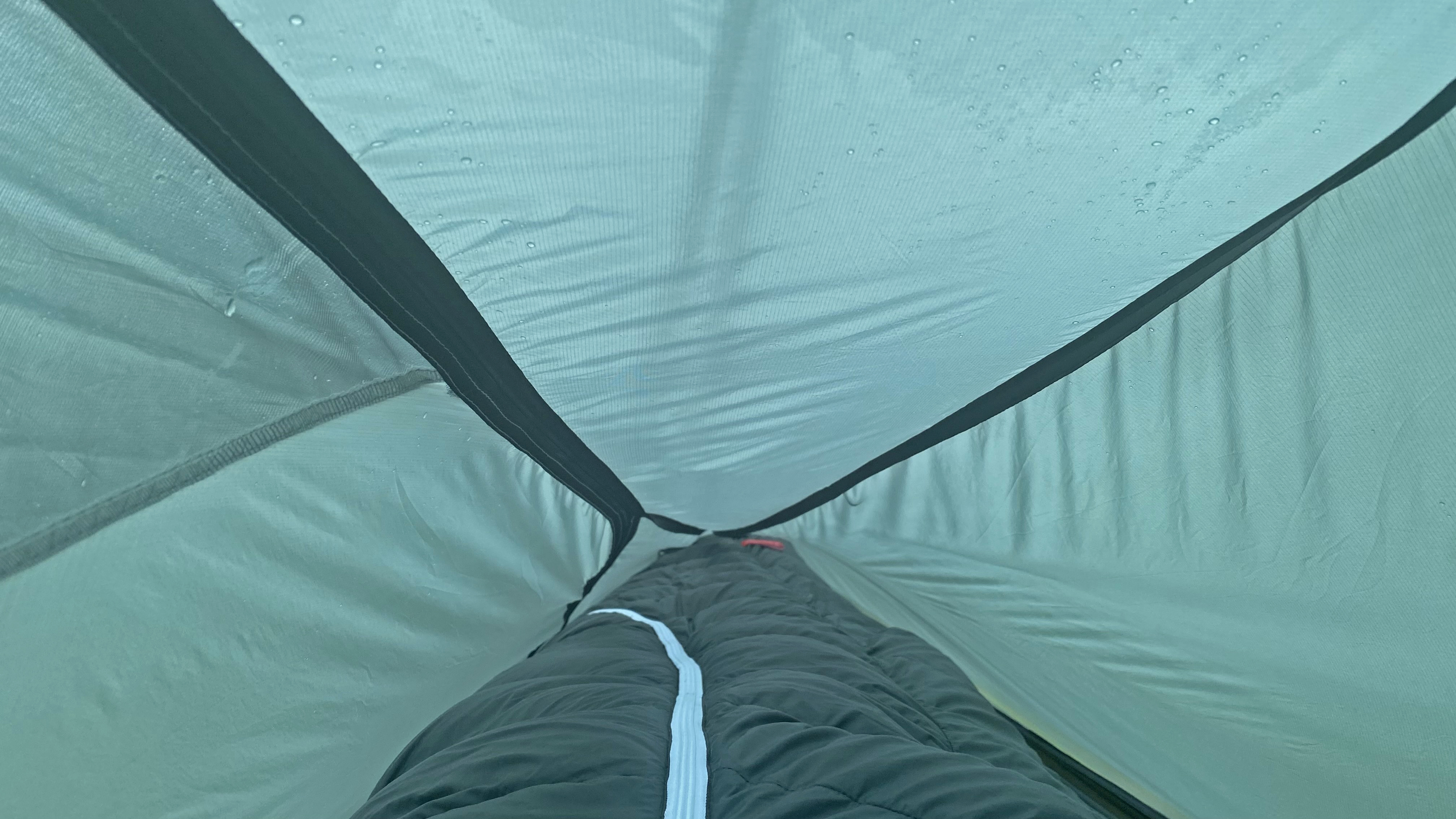
The groundsheet's hydrostatic head rating isn’t stated, but I have been using the F10 Neon UL1 on pretty wet terrain without employing an extra footprint (because carrying extra weight would go against the grain of such a svelte structure). Although I have, of course, used a camping mat, no moisture has so far made its way through.
In terms of thermal protection, I have been using this tent in springtime while using a lightweight sleeping bag, and I was comfortably warm. I’d rate the F10 Neon UL1 as a decent 3-season tent, despite being a solo shelter (so you can never benefit from the warmth a tent buddy brings to the party).
Lastly, I really love the natural, non-lurid green colour of this tent, which, combined with its low profile and the speed with which you can pitch and drop it, allows you to be very discreet when you are wild camping.
Verdict

I’ve been testing tents for a long time, but even I was a bit surprised at just how lightweight the F10 Neon UL1 is, for the level of performance it offers. I’ve used bivvy bags that are heavier and bulkier than this, and it’s absolutely brilliant for thru-hiking, wild camping, fastpacking and bikepacking escapades.
The tent itself is well-designed and offers a reasonable amount of space inside. There's enough room for one person and a pack (just about), while footwear can be stowed under the flysheet on the outside. The shelter is waterproof and warm enough for lightweight adventures across three seasons.
My only real problem with it is the spike-style pegs it comes with, which are far too thin to be effective in windy conditions and can easily be lost. I’d rather carry a few more grams on the trails and then sleep more soundly, knowing my tent would withstand a few gusts.
Also consider
For an excellent lightweight 1-person backpacking tent with a lot more space inside, check out the Vaude Hogan SUL 1–2P. Alternatively, if you’re on a budget and looking for a 1-person shelter that’s considerably cheaper, consider the Alpkit Soloist, which offers high performance and more space but weighs twice as much as the F10 Neon UL1. Other good options include the Sierra Designs High Route 1 3000 1P tent.
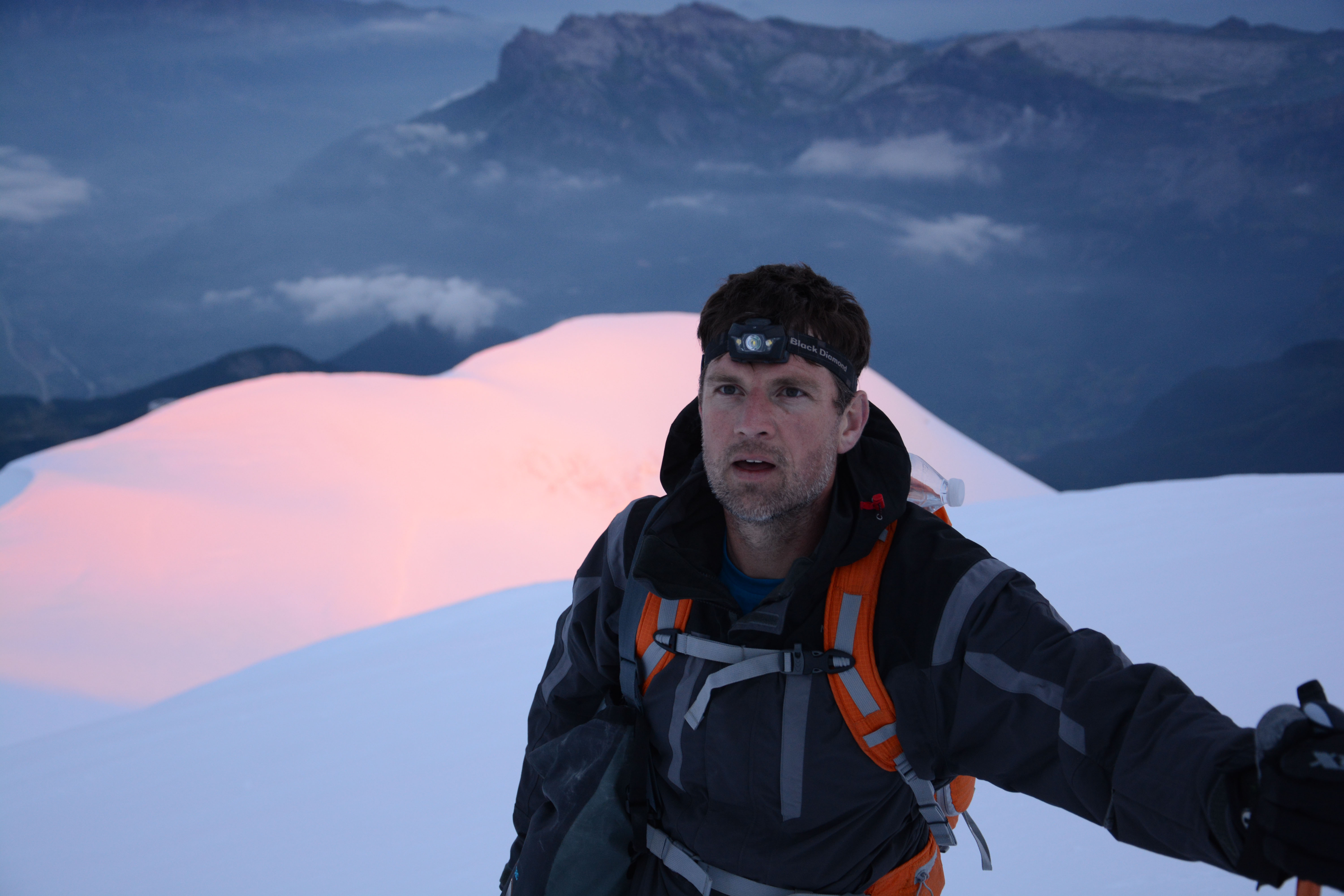
Author of Caving, Canyoning, Coasteering…, a recently released book about all kinds of outdoor adventures around Britain, Pat Kinsella has been writing about outdoor pursuits and adventure sports for two decades. In pursuit of stories he’s canoed Canada’s Yukon River, climbed Mont Blanc and Kilimanjaro, skied and mountain biked across the Norwegian Alps, run ultras across the roof of Mauritius and through the hills of the Himalayas, and set short-lived speed records for trail-running Australia’s highest peaks and New Zealand’s nine Great Walks. A former editor of several Australian magazines he’s a longtime contributor to publications including Sidetracked, Outdoor, National Geographic Traveller, Trail Running, The Great Outdoors, Outdoor Fitness and Adventure Travel, and a regular writer for Lonely Planet (for whom he compiled, edited and co-wrote the Atlas of Adventure, a guide to outdoor pursuits around the globe). He’s authored guides to exploring the coastline and countryside of Devon and Dorset, and recently wrote a book about pub walks. Follow Pat's adventures on Strava and instagram.